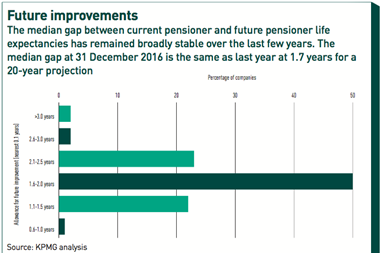Applying the continuous mortality investigation (CMI) model could slice between 2.5% and 3.5% off liabilities in Swiss Pensionskassen, according to consultancy group Libera.
The CMI model incorporates regular adjustments to increases in longevity, whereas standard mortality tables currently project an unbroken upwards tendency.
“Under the CMI model the life expectancy of a 65-year-old Swiss male is 3.5% lower than compared with the model used by the federal statistical office,” Libera noted.
However, so far “no Swiss Pensionskassen are applying the CMI model”, Benno Ambrosini, board member at Libera, confirmed to IPE.
“But there is no regulatory impediment to using a different model as long as it is adjusted to the Swiss population,” he added.
Swiss law only states pension funds have to “calculate their annual reports based on accepted basic principles and openly accessible technical foundations”, Libera explained.
In the UK the model has been discussed and applied more widely . Most recently actuaries have calculated that UK life expectancy improvements have stalled in recent years, which could reduce liabilities for many pension schemes.
“What has still to be decided is the long-term adjustment rate to be used in the CMI model for Switzerland,” Ambrosini said.
However, he criticised the rate used by many UK companies, saying the 1.25% widely used in the UK was based on “too little” substantial evidence.
The CMI model is based on the assumption that current rates of mortality improvement converge to a single long-term rate, as noted by the UK’s Institute and Faculty of Actuaries.























No comments yet